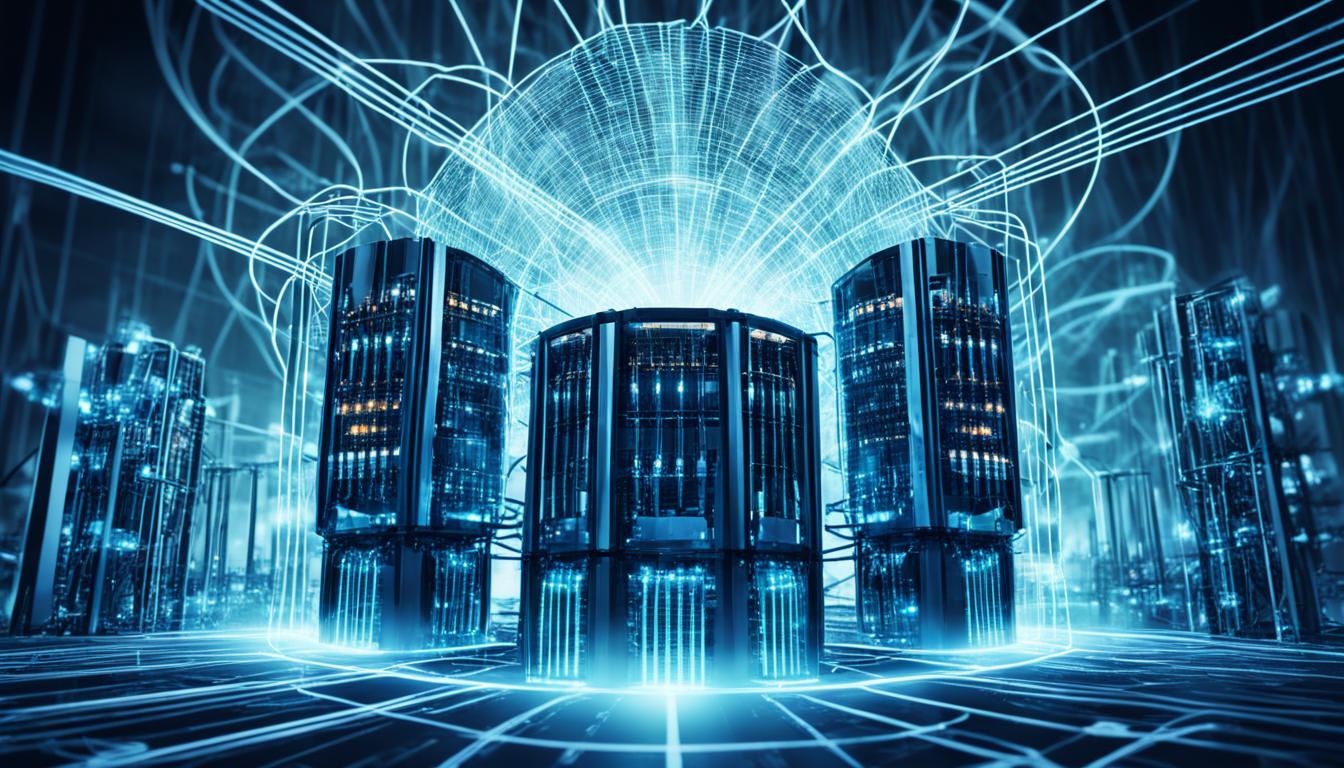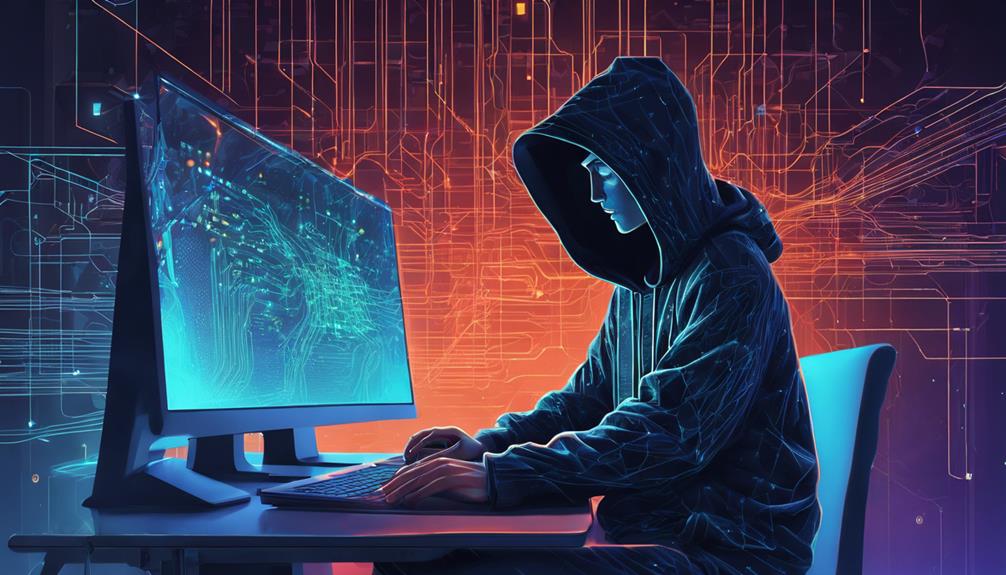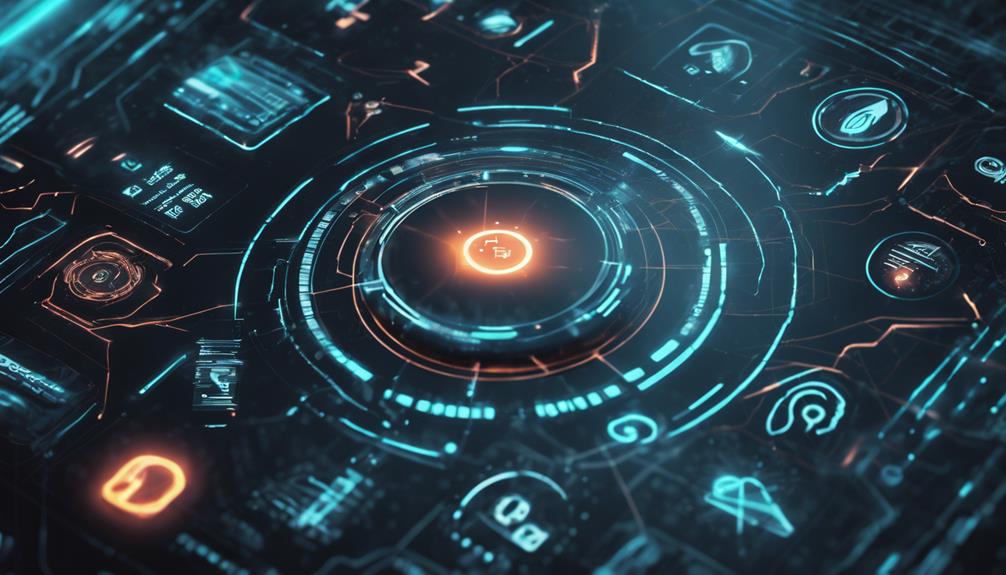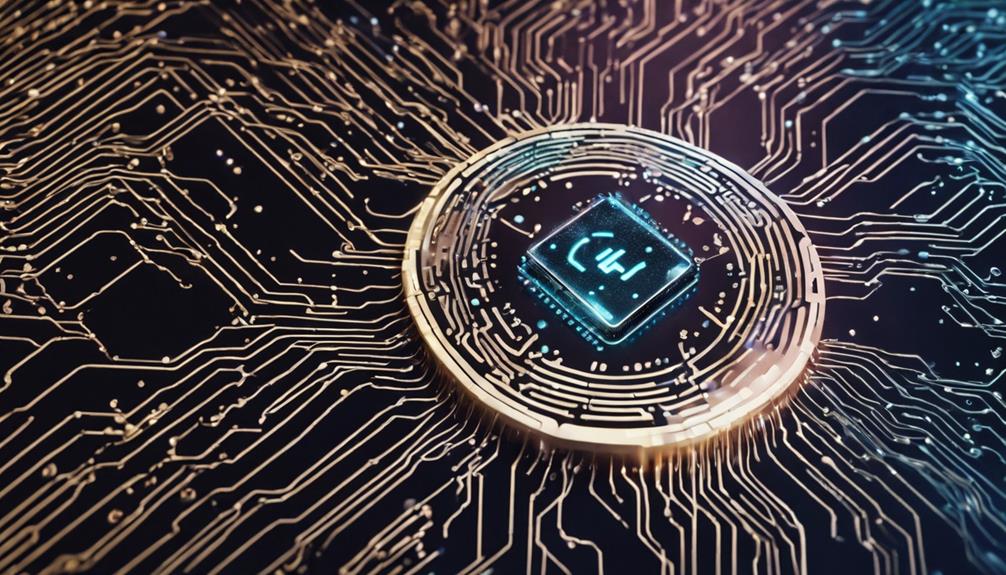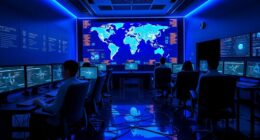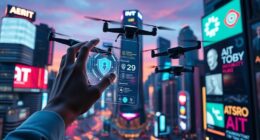Did you know that cyberattacks on critical infrastructure have become a norm in sectors such as energy, healthcare, and transportation, raising concerns globally?1 Threat actors, including nation-states, organized criminals, and terrorists, have become increasingly sophisticated in targeting vital systems.1 These cyberattacks on critical infrastructure have been detected worldwide, emphasizing the urgent need for robust cybersecurity measures to protect essential services and assets.
Key Takeaways:
- Threat actors are targeting critical infrastructure in sectors such as energy, healthcare, and transportation, making cyberattacks on vital systems a major concern globally.1
- These cyber threats come from state actors, criminal groups, terrorists, and other malicious entities, posing risks of service disruptions, economic instability, and compromises to national security.2
- Cybersecurity efforts are vital to safeguard critical infrastructure, which includes sectors like defense, oil and gas, healthcare, and utilities, with over 80% owned by the private sector in the United States.1
- CISA and other government agencies coordinate security and resilience efforts to enhance critical infrastructure cybersecurity, emphasizing layered vigilance, readiness, and resilience based on NIST’s protection framework.1
- Collaboration between public and private sectors, along with situational awareness, is crucial for effectively safeguarding critical infrastructure from cyber threats.12
Importance of Critical Infrastructure Cybersecurity
Critical infrastructure plays a vital role in our modern society, encompassing sectors such as energy, transportation, healthcare, and more. The reliance on digital systems within critical infrastructure makes them susceptible to cyberattacks, posing significant risks to our vital systems and national security.
The rapid expansion of global connectivity and the emergence of the Internet of Things (IoT) have created new avenues for threat actors to exploit vulnerabilities in critical infrastructure. Cyberattacks targeting critical infrastructure have been witnessed across the globe, highlighting the urgent need for robust cybersecurity measures to defend against these threats.
Ranging from sophisticated nation-state attacks to ransomware incidents on state-owned energy companies, these cyberattacks demonstrate the high stakes involved in protecting our vital systems. In Iran, a cyberattack targeted Israel’s water systems, emphasizing the potential consequences of cyber threats to critical infrastructure.
The private sector owns and operates over 80% of critical infrastructure in the United States. This shared responsibility between the government and industry underscores the need for collaborative efforts in cybersecurity to safeguard these vital systems.
| Sector | Key Statistics |
|---|---|
| Food and Agriculture | Contributes to about one-fifth of the economic activity in the U.S. |
| Financial Services | Foundational to the U.S. economy but faces numerous risks due to the storage and processing of financial data. |
| Healthcare and Public Health | Protects Americans from infectious diseases, terrorist attacks, and disasters. Mostly privately owned. |
| Nuclear Reactors, Materials, and Waste | Attacks could lead to uninhabitable zones, power outages, or shortages in cancer treatments. |
| Waste and Wastewater Systems | Ensures access to clean water, and attacks could result in water contamination or shortages. |
The Department of Homeland Security (DHS) recognizes critical infrastructure as foundational to national and economic security. Cybersecurity professionals play a crucial role in safeguarding these assets against digital threats. The University of Tulsa offers an online M.S. in Cyber Security program that prepares professionals to defend critical infrastructure against modern threats.
Collaboration between the private and public sectors is of utmost importance in protecting critical infrastructure from cyber threats. By working together, industry stakeholders and government agencies can enhance cybersecurity practices, share threat intelligence, and develop effective defense mechanisms.
Government Initiatives for Critical Infrastructure Cybersecurity
The protection of critical infrastructure against cyber threats is a top priority for the United States government. Through strategic initiatives and collaboration between government agencies and private sector entities, efforts are being made to strengthen the cybersecurity framework and ensure the resilience of vital systems.
One notable initiative is the Industrial Control Systems Cybersecurity Initiative (ICSCI), a voluntary collaboration between the Federal Government and the critical infrastructure community3. This initiative aims to significantly enhance the cybersecurity of critical systems by focusing on threat visibility, detection, and response capabilities3.
The ICSCI initially began with a pilot effort targeting the electricity subsector, followed by similar endeavors for natural gas pipelines3. Future plans include extending the initiative to include the water and wastewater sector systems as well as the chemical sector3. These efforts reflect the commitment to bolster cybersecurity across various critical infrastructure sectors.
In line with these initiatives, the Department of Homeland Security’s Critical Infrastructure Security Agency (CISA) plays a crucial role in ensuring cyber preparedness and resilience. CISA focuses on strengthening the cybersecurity posture of critical infrastructure by providing guidance, coordination, and support3. The agency works closely with sector-specific agencies to identify and address vulnerabilities in sectors critical to national security, such as energy, transportation, and healthcare3.
Collaboration between the public and private sectors is a key aspect of government initiatives for critical infrastructure cybersecurity. Recognizing the interdependencies of critical infrastructure, the government actively engages with industry stakeholders to share information, best practices, and resources necessary for effectively countering cyber threats3. This collaboration promotes a secure infrastructure framework and ensures the protection of vital systems.
Cybersecurity Challenges in the Energy Sector
The energy sector plays a critical role in providing power and maintaining the electric grid throughout the United States. However, it faces significant cybersecurity challenges due to its infrastructure vulnerabilities and the increasing sophistication of cyber threats. Protecting the sector’s infrastructure and control systems is of utmost importance in order to ensure the reliability and resiliency of the energy supply.
The energy industry represents about 9 percent of the Gross Domestic Product (GDP) in the U.S., contributing approximately $1 trillion to the economy annually4. It is the fourth-largest financial sector, following communication services, consumer discretionary, and consumer staples4. With around 6.8 million people employed in the industry, it constitutes 4.6 percent of the U.S. workforce4.
The energy sector has become a prime target for cybercriminals due to its critical role in supporting various other industries. Disruptions in the energy sector can have far-reaching consequences, affecting industries reliant on consistent power supply and potentially causing significant economic impact5. The interconnectedness of critical infrastructure sectors means that an attack on the energy sector can have ripple effects on other sectors, amplifying the damage and highlighting the urgent need for robust cybersecurity measures.
The energy sector faces unique cybersecurity challenges due to its legacy systems and operational frameworks4. Many energy companies still rely on outdated technologies, which may lack modern security features and are vulnerable to cyber attacks. Additionally, the complexity and interconnectedness of energy systems render them susceptible to cyber threats. Addressing these vulnerabilities and securing energy infrastructure require collaboration between the Critical Infrastructure Security Agency (CISA), the Department of Energy, and industry stakeholders4.
The US Department of Energy established the Office of Cybersecurity, Energy Security, and Emergency Response (CESER) in 2018 with the aim of safeguarding critical energy infrastructure against cyber threats4. CESER plays a crucial role in coordinating efforts to enhance the resilience and security of the energy sector. By promoting collaboration, information sharing, and the development of best practices, CESER supports the energy sector in defending against cyber threats.
Cybersecurity in the energy sector requires a comprehensive approach, combining technology, policy, and training. It is essential to enhance cybersecurity training for employees and contractors to raise awareness and strengthen the human firewall. Advanced threat detection technologies, such as artificial intelligence, can help detect and respond to cyber threats in real-time. Network segmentation is another critical strategy for isolating critical systems and preventing the spread of cyber attacks. Regular security audits and updates are necessary for identifying and remediating security weaknesses in the energy sector5.
Cybersecurity Challenges in the Energy Sector
| Challenges | Solutions |
|---|---|
| Legacy systems lacking modern security features | Investing in upgrading technologies and implementing security measures |
| Interconnectedness and complexity of energy systems | Implementing network segmentation, secure communication protocols, and access controls |
| Shortage of skilled cybersecurity workers | Providing cybersecurity training and certifications to the workforce |
Efforts must also be made to address the shortage of skilled cybersecurity professionals in the energy sector. The global shortage in skilled cybersecurity workers poses challenges in addressing the cybersecurity needs of the energy industry4. Collaboration with educational institutions can help foster talent development programs and attract new professionals to the field of energy cybersecurity. Emphasizing the importance of cybersecurity education and career pathways can help build a strong cybersecurity workforce.
Overall, safeguarding the energy sector from cyber threats requires a proactive and collaborative approach. It is crucial for industry stakeholders to work together, sharing knowledge and best practices, to strengthen the security posture of the energy sector. By prioritizing cybersecurity and implementing robust measures, the energy sector can minimize the risks posed by cyber threats and ensure the resilience of critical energy infrastructure.
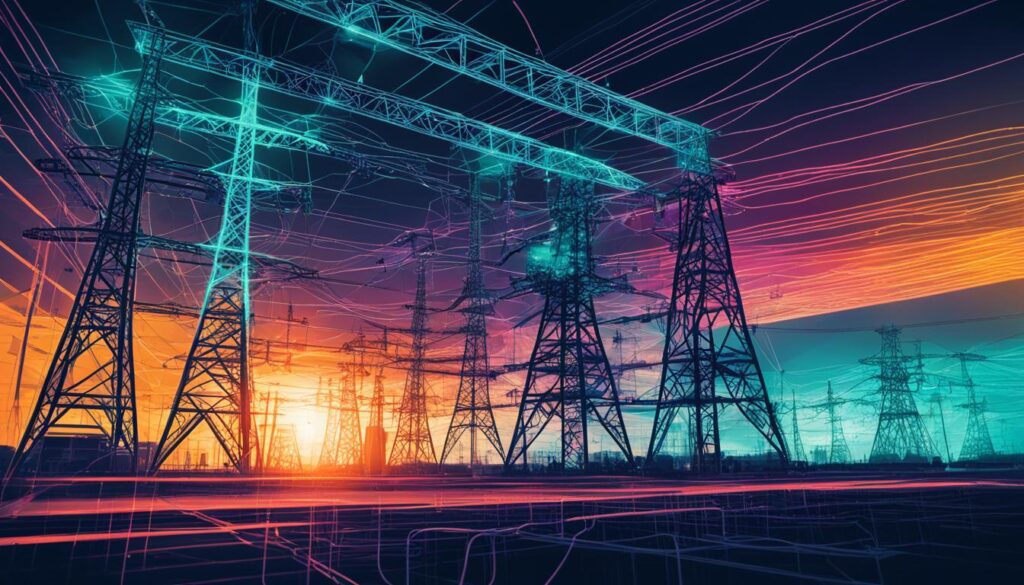
Framework for Critical Infrastructure Protection
The National Institute of Standards and Technology’s framework for critical infrastructure protection provides a comprehensive approach to managing cybersecurity risks and safeguarding vital systems. Developed through collaboration between government and the private sector, this framework offers industry standards and best practices to effectively and cost-efficiently manage cybersecurity risks across critical infrastructure sectors. The framework consists of three parts: the Framework Core, the Framework Profile, and the Framework Implementation Tiers6.
The Framework Core encompasses cybersecurity activities, outcomes, and informative references, providing organizations with guidance on managing cybersecurity risks using business drivers6. By utilizing a common language, the Framework aims to reduce and better manage cybersecurity risks, ensuring the security and resilience of critical infrastructure6. It is a voluntary, risk-based framework that organizations of all sizes and levels of cybersecurity risk can apply to improve their security posture6.
The Framework is a dynamic document that evolves based on industry feedback and lessons learned from implementation. This iterative approach ensures that the framework remains relevant and effective in addressing emerging cyber threats6. It provides organizations with the flexibility to adapt and enhance their cybersecurity strategies as the threat landscape evolves6.
Framework Elements
The National Institute of Standards and Technology’s framework for critical infrastructure protection includes the following key elements:
- Identify: Organizations must understand and prioritize their critical assets and the associated cybersecurity risks6.
- Protect: Measures must be implemented to safeguard against identified risks, including access controls, awareness training, and data encryption6.
- Detect: Monitoring systems and processes should be established to identify potential cyber threats and anomalies6.
- Respond: Organizations must develop and implement response plans to effectively address and mitigate cyber incidents6.
- Recover: Strategies should be put in place to restore services and systems following a cyber incident, focusing on resilience and continuity6.
By following these framework elements, organizations can enhance their risk management capabilities and protect critical infrastructure from cyber threats. Sharing information and collaborating between the public and private sectors is crucial for effectively addressing cybersecurity risks and ensuring the resilience of the nation’s critical infrastructure6.
Innovations in Critical Infrastructure Cybersecurity
New technologies continue to emerge in the field of critical infrastructure cybersecurity, fortifying the defense against evolving threats. These innovations, such as cloud security, authentication, biometrics, and automation, are playing a crucial role in enhancing the resilience and protection of critical infrastructure systems.
Cloud security solutions provide a secure and scalable platform for storing and processing critical infrastructure data. By leveraging cloud-based infrastructure, organizations can enhance their ability to detect and respond to cyber threats in real-time, improving overall system security7.
Authentication mechanisms have also evolved to strengthen access controls and ensure only authorized individuals can access critical infrastructure systems. Biometric authentication, such as fingerprints or facial recognition, offers a more robust and secure form of verification compared to traditional passwords or PINs7.
Automated technologies are revolutionizing the way organizations respond to cyber threats. Artificial intelligence and machine learning algorithms can analyze vast amounts of data to detect patterns and anomalies, enabling the automated identification of potential cyber attacks and triggering immediate defensive measures7.
Advancements in network security, endpoints, firewalls, antivirus software, and encryption are also contributing to the overall hardening of critical assets against cyber threats. These technologies provide multiple layers of protection, making it increasingly difficult for threat actors to infiltrate and compromise critical infrastructure systems7.
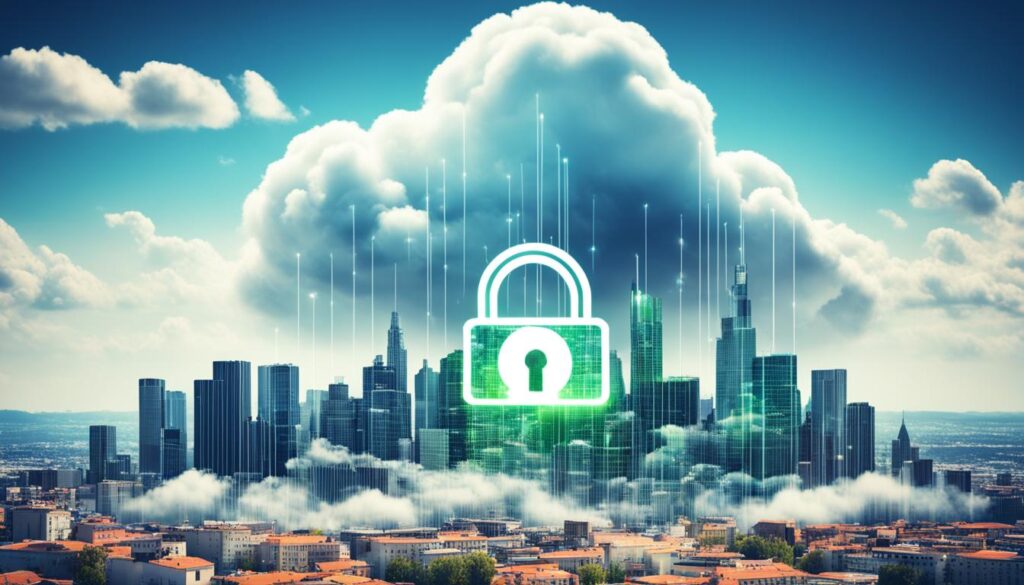
Regulations and Cybersecurity Strategies
The protection of critical infrastructure requires a comprehensive approach that goes beyond regulatory compliance. While regulations provide a legal framework for organizations to implement cybersecurity measures, they are not sufficient in addressing the rapidly evolving threat landscape8. To effectively safeguard vital systems, it is crucial to embrace cyber resilience and adopt a defense-in-depth strategy.
The concept of cyber resilience emphasizes the ability to anticipate, counteract, and recover from cyber threats, ensuring the continuous operation of critical infrastructure8. Cyber resilience strategies, such as cyber asset attack surface management and continuous threat exposure management, focus on proactive measures rather than just responding to incidents8. By implementing these strategies, organizations can enhance their ability to detect, respond to, and mitigate cyber threats.
“Cyber resilience is not simply about withstanding attacks; it is about being prepared to adapt and respond effectively to the changing cybersecurity landscape.” – National Cybersecurity Strategy
Collaboration plays a vital role in securing critical infrastructure. The effective integration of public and private sectors allows for the exchange of information, expertise, and resources, strengthening the collective defense against cyber threats8. The National Cybersecurity Strategy emphasizes the importance of collaboration in securing cyberspace and promoting responsible state behavior8. By working together, organizations and governments can improve threat intelligence sharing, develop common standards, and foster resilience in the face of cyberattacks.
Compliance with regulations and the implementation of cyber resilience strategies are essential components of an effective defense-in-depth approach. Defense-in-depth involves deploying multiple layers of security measures, each acting as an additional barrier to protect critical infrastructure8. By combining regulatory compliance with cyber resilience strategies, organizations can create a robust security framework that addresses current and future cyber threats.
Cybersecurity Regulations and Standards
Regulations serve as a baseline for organizations to implement cybersecurity practices and protect critical infrastructure. Compliance with these regulations ensures a minimum level of security, providing a solid foundation for cyber defense8. Some key regulations and standards relevant to critical infrastructure cybersecurity include:
- The National Institute of Standards and Technology (NIST) Cybersecurity Framework: A comprehensive set of guidelines, best practices, and standards for managing cybersecurity risks
- The European Union Agency for Cybersecurity (ENISA) Framework for the protection of Critical Information Infrastructures (CIIs): Designed to define methodologies, principles, and best practices in securing critical information infrastructures in the EU
- The General Data Protection Regulation (GDPR): Focuses on data privacy and protection, requiring organizations to implement appropriate technical and organizational measures to secure personal data
Compliance with these regulations demonstrates an organization’s commitment to cybersecurity and helps create a culture of security awareness and responsibility8. However, it is important to note that regulations alone are not sufficient to address the dynamic nature of cyber threats.
Continuous Improvement and Adaptation
In addition to regulatory compliance, organizations must continually evaluate and update their cybersecurity strategies to stay ahead of emerging threats. The evolving threat landscape requires a proactive approach that goes beyond static compliance requirements8. Cybersecurity professionals must engage in continuous monitoring, vulnerability assessment, and risk management to identify and address vulnerabilities in critical infrastructure82.
“The interconnected nature of digital systems, combined with increasingly complex and interdependent technologies, creates an urgent need for organizations to shift the advantage to defenders in the digital ecosystem.” – National Cybersecurity Strategy
To effectively address the increasing risks associated with cyber threats, organizations should invest in emerging technologies and innovative solutions. Artificial intelligence systems can assist in automating threat detection, enabling quicker response times and strengthening defenses8. By integrating advanced technologies into their cybersecurity strategies, organizations can enhance the resilience of critical infrastructure and better protect sensitive information.
Partnerships and collaborations between organizations, governments, and international allies are instrumental in addressing cyber threats on a global scale. By forging international partnerships, sharing threat intelligence, and establishing norms of responsible state behavior, the international community can collectively deter and mitigate cyberattacks8.
| Compliance | Cyber Resilience | Defense-in-depth Strategy |
|---|---|---|
| Ensures minimum security requirements | Focuses on proactive measures | Deploys multiple layers of security |
| Creates a culture of security awareness | Helps anticipate and counteract threats | Strengthens the security framework |
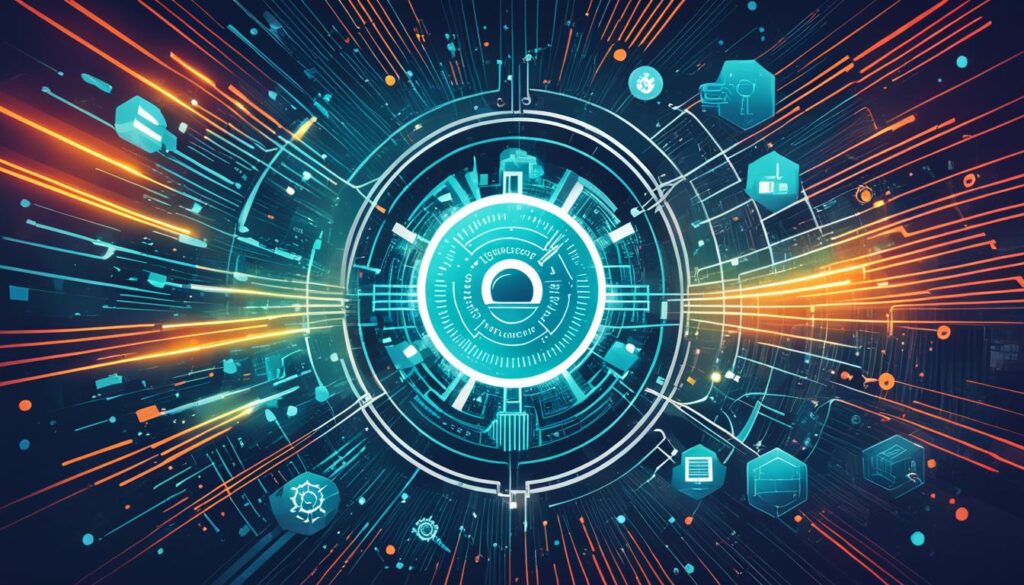 |
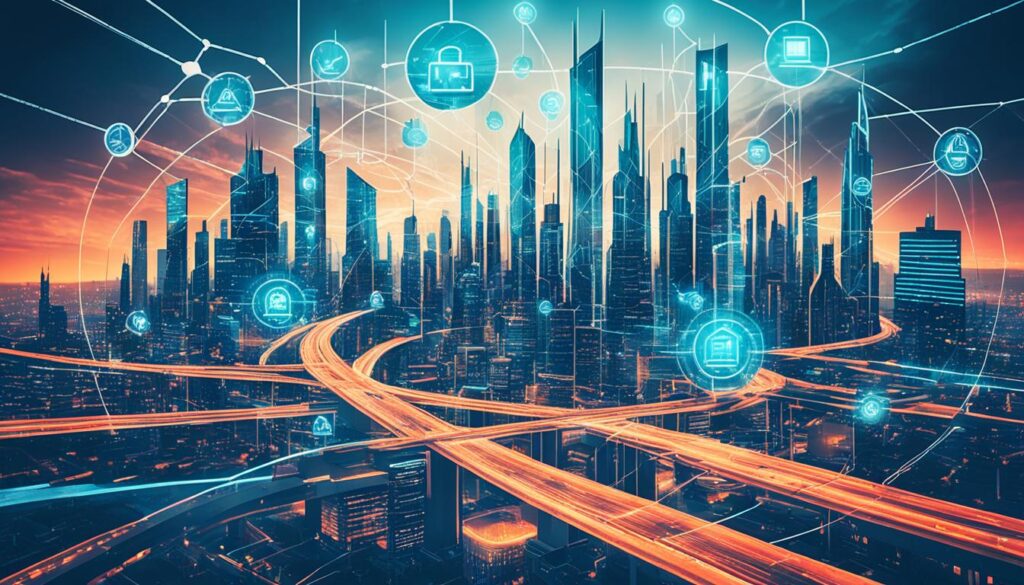 |
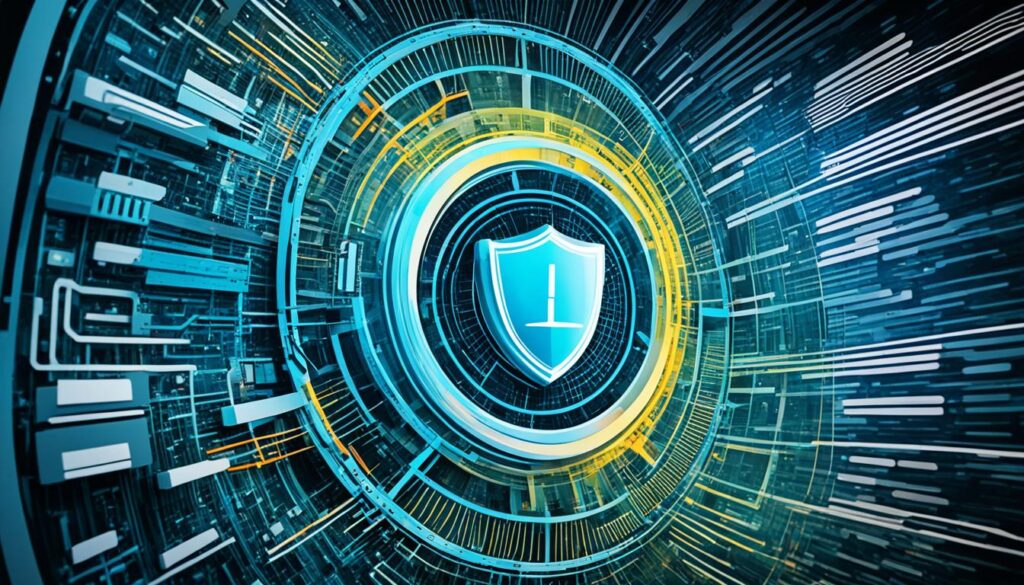 |
Ensuring Hardware Visibility for Cybersecurity
Complete and accurate visibility into hardware assets is critical for effective cybersecurity. In the world of critical infrastructure, where the stakes are high, organizations must have a comprehensive understanding and control over their hardware inventory. This includes monitoring and managing the diverse hardware characteristics and interfaces found in IT/OT/IoT environments.
Legacy systems, such as programmable logic controllers (PLCs), are prevalent in critical infrastructure sectors. However, these systems often lack proper security measures due to their age9. As new technologies are implemented without strong security considerations, the lack of attention given to cybersecurity within critical infrastructure industries becomes apparent9.
The Sepio platform provides deep physical layer visibility and rogue device mitigation, ensuring that all peripherals are identified, detected, and managed to prevent hardware attacks9.
One of the significant challenges in managing hardware assets is the human factor. Employees in critical infrastructure companies may not have the knowledge or awareness required to prevent cyberattacks, making them susceptible to accidentally or purposely implementing malicious activities9.
Critical infrastructure facilities are likely to be large companies in terms of size since they are responsible for serving an entire nation. With a large number of employees involved, managing cybersecurity risks becomes increasingly complex9.
Platforms like Sepio offer comprehensive device visibility, enabling organizations to detect and mitigate hardware attacks. By providing a complete picture of hardware inventory, including connected and peripheral devices, organizations can enforce better security practices and protect their critical assets9.
Importance of Asset Inventory in Hardware Visibility
Effective hardware visibility requires a robust asset inventory management system. Maintaining an up-to-date inventory of hardware assets is essential for accurate monitoring, detecting unauthorized devices, and ensuring compliance with security policies.
By having a clear asset inventory, organizations can identify vulnerabilities and potential entry points for cyberattacks. It enables them to implement targeted security measures and allocate resources effectively to address the most critical areas of concern. Additionally, an asset inventory allows for efficient incident response and forensic analysis in the event of an attack.
Having a comprehensive asset inventory also facilitates proactive risk management. It allows organizations to prioritize security updates and patches, ensuring that critical vulnerabilities are addressed promptly. It also helps streamline maintenance and replacement processes, ensuring the reliability and security of hardware assets.
Reference:
- Around a third of the 25 billion IoT devices in the world are used to monitor and control critical infrastructure. The lack of attention given to cybersecurity within industries of critical infrastructure is highlighted as new technologies are implemented without strong security considerations. Legacy systems, such as programmable logic controllers (PLCs) in critical infrastructure sectors, often lack proper security measures due to their age. The Sepio platform provides deep physical layer visibility and rogue device mitigation, ensuring that all peripherals are identified, detected, and managed to prevent hardware attacks. Employees in critical infrastructure companies pose a significant risk as they may not have the knowledge or awareness required to prevent cyberattacks, making them susceptible to accidentally or purposely implementing malicious activities. Critical infrastructure facilities are likely to be very large companies in terms of size since they are responsible for serving an entire nation, increasing the complexity of managing cybersecurity risks due to the large number of employees involved.9
Implementing Cybersecurity Solutions in Critical Infrastructures
Critical infrastructures require robust cybersecurity solutions to protect against sophisticated threats. Sepio’s innovative platform offers essential features to enhance security measures and safeguard vital systems.
Sepio provides Physical Layer coverage, ensuring complete device visibility2. With this feature, critical infrastructures can gain comprehensive awareness of all connected devices, mitigating the risks associated with unidentified or unauthorized hardware.
An integral component of Sepio’s platform is their Rogue Device Mitigation (RDM) solution2. RDM effectively identifies and handles all peripherals, preventing unauthorized access and reducing the potential for breaches or attacks through rogue devices.
Additionally, Sepio’s platform includes a comprehensive policy enforcement mechanism2. This mechanism enables organizations to enforce best practices and block unapproved or rogue hardware, strengthening the overall security posture of critical infrastructures.
By leveraging Sepio’s cybersecurity solutions, critical infrastructures can enhance their defense mechanisms, minimize vulnerabilities, and ensure the integrity and continuity of operations.
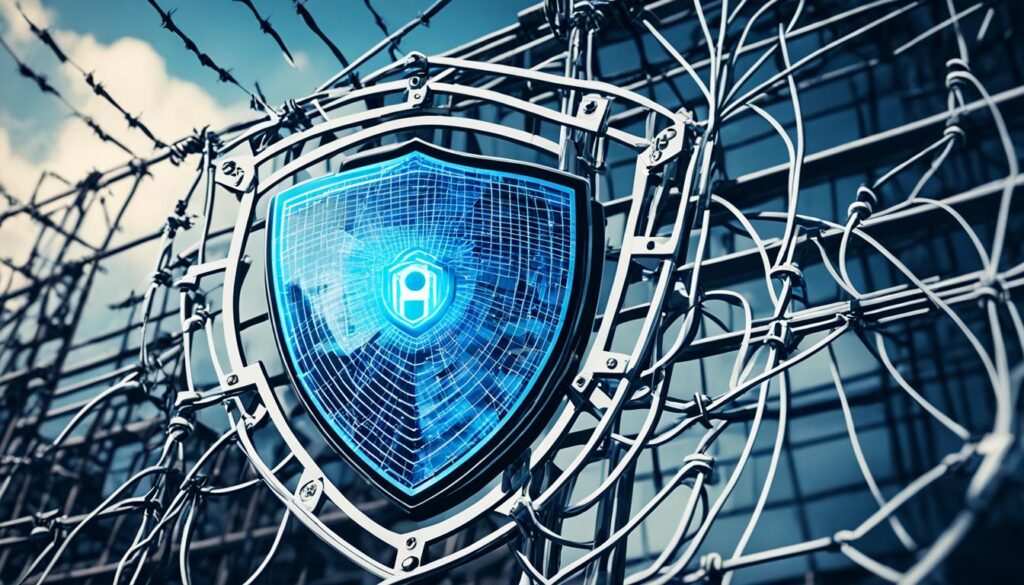
Protecting Critical Infrastructure from Virtual Threats
Protecting critical infrastructure from virtual threats is of utmost importance in ensuring the security and resilience of vital systems. With the rapid advancement of technology, legacy systems and operational technology cybersecurity pose significant challenges in safeguarding critical infrastructure7. These outdated systems, including programmable logic controllers (PLCs) and legacy technology, often lack the necessary security measures, making them vulnerable to cyberattacks. The integration of new technologies, such as the Internet of Things (IoT), further amplifies the attack surface, intensifying the need for enhanced cybersecurity measures.
The threat landscape for critical infrastructure cybersecurity has been evolving, and thus, addressing these vulnerabilities is crucial7. To mitigate the risks posed by legacy systems, organizations need to adopt a proactive approach towards cybersecurity. This includes implementing comprehensive risk management strategies that emphasize the importance of accountability and information exchange among different entities7. The Federal Government is committed to leveraging expertise and technical resources from relevant departments and agencies to effectively manage sector-specific risks. It emphasizes the importance of public-private collaboration and international engagement7. This concerted effort fosters the fortification of security and resilience in critical infrastructure, aligning various federal policies and frameworks to ensure a cohesive approach7.
Furthermore, the frequency of major cyberattacks has significantly increased over the last two decades, highlighting the urgency to enhance operational technology cybersecurity10. The interconnectedness of critical infrastructure systems has made them more susceptible to cyber threats10. To address these challenges, innovative solutions such as the Cyberzcape™ Tracker have been developed to proactively protect and neutralize threats within critical infrastructure networks10. Companies like Parsons Corporation have also made strategic acquisitions in the cyber and technology sector, reinforcing their defensive cyber capabilities10. These advancements in cybersecurity technology and expertise play a vital role in safeguarding critical infrastructure from virtual threats.
Moreover, the U.S. government has implemented measures to enhance critical infrastructure protection. Presidential directives like PDD-63 outline the significance of safeguarding critical infrastructure for national and economic security11. The Department of Homeland Security has designated various sectors, including energy, transportation, and information technology, as critical infrastructure, further emphasizing their protection11. Cybersecurity solutions, such as Deep CDR, Proactive DLP, and Sandboxing, play a pivotal role in defending critical infrastructure against cyber threats11. The Cybersecurity and Infrastructure Security Agency (CISA) is responsible for protecting critical infrastructure and managing risks, while the National Risk Management Center (NRMC) collaborates to identify and address significant risks11. Organizations can also turn to the National Institute of Standards and Technology (NIST) for guidance in developing effective protection strategies that align with industry standards11.
In conclusion, protecting critical infrastructure from virtual threats is a complex and ongoing challenge that requires continuous vigilance and investment in cybersecurity measures. Addressing the vulnerabilities posed by legacy systems and operational technology cybersecurity is crucial for the security and resilience of vital systems. By embracing innovative technologies, fostering public-private collaboration, and leveraging expertise and resources, critical infrastructure industries can effectively protect themselves against cyber threats and ensure the uninterrupted functioning of essential services.
Addressing Human Factors in Critical Infrastructures Cybersecurity
Within the realm of critical infrastructures, employees play a significant role in ensuring cybersecurity. However, their lack of knowledge and awareness about cyber threats can make them susceptible to unwittingly causing cyberattacks. This is particularly concerning given that humans are identified as the most notable risk to security, accounting for 86% of security risks []. Human factors, such as miscalculations, contribute to over 80% of cyber incidents, data violations, and malware attacks [].
It is essential to address these human factors and provide comprehensive training and awareness programs to mitigate cyber risks. Organizations must prioritize security training, policy enforcement, effective communication, and avoiding employee overextension to reduce human errors in cybersecurity [,]. Managers also play a crucial role in influencing human performance and should prioritize cybersecurity best practices within their teams [,].
Stressful work environments can contribute to increased human errors in cybersecurity incidents, emphasizing the importance of addressing workplace conditions and managing security fatigue and stress [,]. Moreover, communication plays a crucial role in cybersecurity strategy, both internally and externally. Organizations must foster effective communication channels to ensure a strong defense against cybersecurity threats and maintain resilience [,,,].
To mitigate the risks associated with human factors in critical infrastructures cybersecurity, companies must focus on educating and training employees. Company leadership, including the CEO, COO, and CFO, holds the responsibility for cybersecurity governance within organizations [12,,,,]. By promoting a culture of cybersecurity awareness and providing the necessary resources, organizations can create a strong defense against cybersecurity threats and protect critical infrastructure assets.
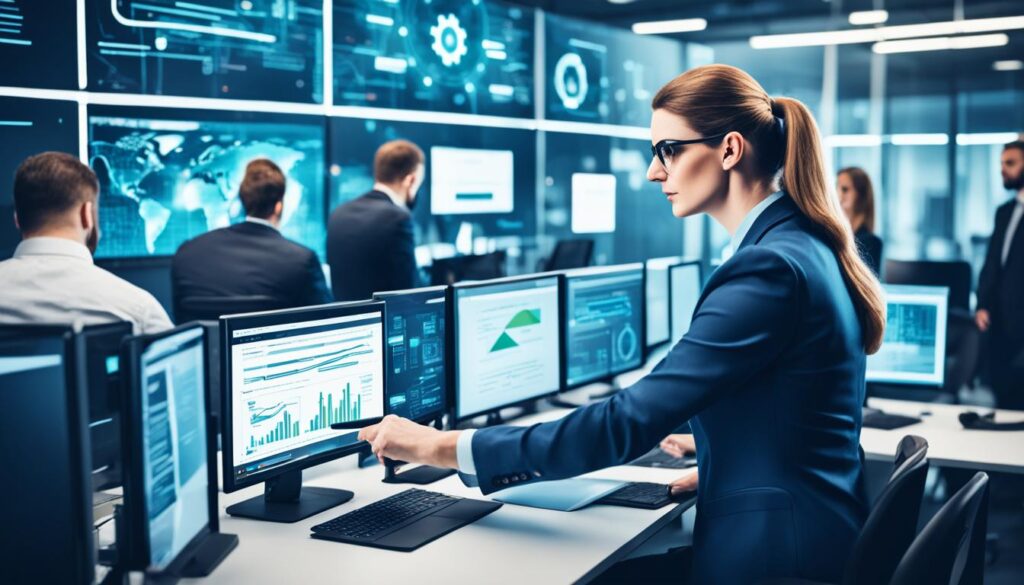
The Ripple Effect of Cyberattacks on Critical Infrastructure
Cyberattacks on critical infrastructure can have far-reaching consequences. The interconnectedness of critical infrastructure sectors means that an attack on one sector can impact others, amplifying the damage. This ripple effect highlights the need for robust cybersecurity measures to protect vital systems and mitigate the potential impact of such attacks9.
The reliance on interconnected systems in sectors like transport, water, agriculture, power, and energy creates vulnerabilities that cybercriminals can exploit. As a result, successful cyberattacks on critical infrastructure can disrupt multiple sectors simultaneously, leading to widespread disruption and potential cascading effects on society and the economy913.
Ransomware attacks and data breaches pose significant risks to the functioning of critical infrastructure. The reliance on these essential assets makes organizations more susceptible to complying with demands, increasing the likelihood of successful ransomware attacks9. Additionally, an increasing dependence on critical infrastructures due to their essential societal functions underscores the urgency for improved cybersecurity measures to mitigate risks9.
The interconnected nature of critical infrastructure sectors also increases the potential for cyberattacks to propagate across different sectors. Cyberattacks targeting specific sectors can cause disruptions that have a domino effect, impacting interconnected sectors and potentially leading to prolonged downtime and widespread consequences913.
To address the ripple effect of cyberattacks on critical infrastructure, organizations must prioritize cybersecurity and implement comprehensive measures to protect their systems. This includes securing outdated systems and deploying robust technologies like IoT security to mitigate potential entry points for cyberattacks9. Collaborative efforts between government agencies, industry stakeholders, and cybersecurity professionals are crucial in developing effective defense strategies and sharing threat intelligence to counter the ripple effect of cyberattacks on critical infrastructure13.
By taking proactive measures and investing in cybersecurity resilience, organizations can minimize the potential impact of cyberattacks on critical infrastructure and ensure operational continuity. Safeguarding vital systems and critical assets is essential for maintaining the stability and resilience of critical infrastructure in today’s interconnected world913.

| Statistical Data | Reference |
|---|---|
| Around a third of the 25 billion IoT devices globally are utilized for monitoring and controlling critical infrastructure. | 9 |
| The reliance on interconnected systems in sectors like transport, water, agriculture, power, and energy increases the potential for successful cyberattacks on critical infrastructure. | 9 |
| Ransomware attacks and data breaches pose substantial risks to the functioning of society and the economy. | 9 |
| The Colonial Pipeline ransomware attack and the disruption caused by the attack on ViaSat’s commercial satellite KA-SAT network highlight the significant impact of cyberattacks on critical infrastructure. | 13 |
| Cyber adversaries exploit various attack vectors, including satellite and wireless communication networks, third-party vendor dependencies, and increased network access points for remote workers. | 13 |
| Implementing cybersecurity sensors for 24/7 monitoring can lead to faster mitigation actions to limit damage from cyberattacks. | 13 |
The Ongoing Need for Vigilance in Critical Infrastructure Cybersecurity
The evolving threat landscape poses significant challenges to the cybersecurity of critical infrastructure systems. As threat actors become increasingly sophisticated, it is imperative to maintain ongoing vigilance, readiness, and resilience to protect vital systems from emerging threats.
Cyberattacks on critical infrastructure can have far-reaching consequences, as demonstrated by the 2 cyberattacks on Colonial Pipeline and JBS Foods. The ransomware attack on Colonial Pipeline resulted in fuel shortages and disruptions in transportation and supply chains, while the attack on JBS Foods halted operations and impacted the global food supply chain. These incidents highlight the urgency for robust cybersecurity measures to safeguard critical infrastructure.
The Shamoon malware attack on Saudi Aramco in 2012 is another notable example, where data was wiped from approximately 30,000 computers, exposing vulnerabilities in the energy sector.
The U.S. government recognizes the importance of protecting critical infrastructure and provides guidelines and standards through the Cybersecurity and Infrastructure Security Agency (CISA)2. CISA plays a vital role in enhancing critical infrastructure protection and ensuring a coordinated response to cybersecurity threats.
Smart grids, which optimize electricity distribution, are particularly vulnerable to cyberattacks2. An attack on these systems can disrupt energy supplies across multiple sectors, underscoring the need for robust security measures.
Emergency services, including police and medical response teams, rely on reliable communication networks and power supplies to effectively carry out their operations2. Ensuring the resilience and protection of these vital systems is crucial to maintaining public safety and security.
In order to strengthen critical infrastructure cybersecurity in the face of evolving threats, it is essential to adapt security practices and strategies. Implementing innovative technologies, such as advanced threat detection systems and secure network architectures, can bolster readiness and enhance resilience2. Additionally, promoting information sharing and collaboration between sectors is key to staying ahead of emerging threats2.
Evolving Threat Landscape
The threat landscape for critical infrastructure cybersecurity is constantly changing and evolving. This dynamic environment requires organizations to continually reassess their security posture and adapt their defenses to address emerging threats. Staying up-to-date with the latest cybersecurity trends and threat intelligence is essential for maintaining a strong cybersecurity posture.
Readiness and Resilience
Readiness and resilience play a critical role in mitigating risks and minimizing the impact of cyberattacks. Adopting a proactive approach to cybersecurity, organizations can ensure that they are prepared to detect, respond to, and recover from potential vulnerabilities or incidents. Developing incident response plans, conducting regular security assessments, and implementing robust backup and recovery mechanisms are key components of building readiness and resilience.
By being vigilant, proactive, and prepared, organizations can effectively protect their critical infrastructure systems from evolving threats and maintain the integrity and availability of vital systems.
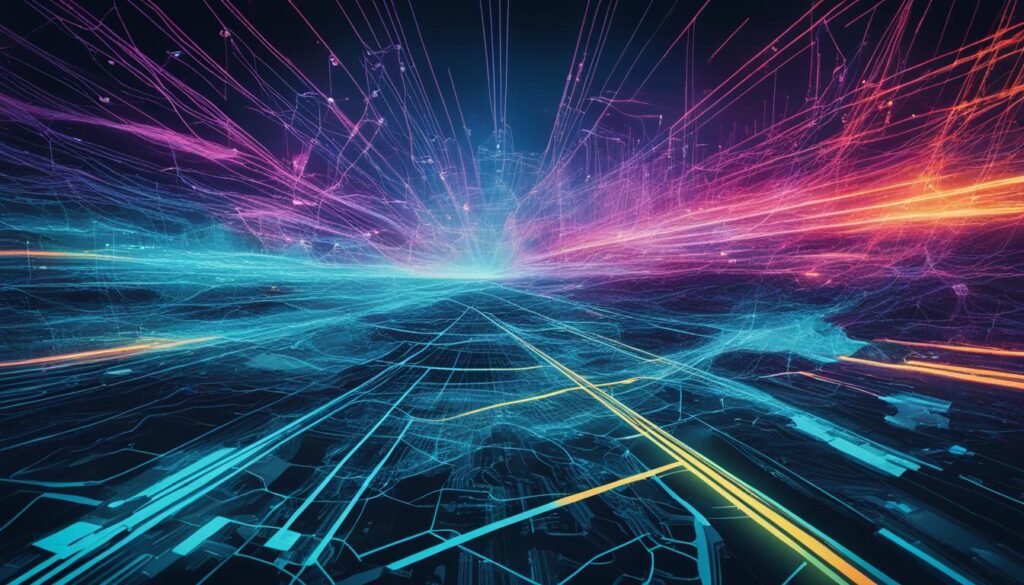
Collaboration for a Secure Infrastructure Framework
Protecting critical infrastructure requires a collaborative effort between the public and private sectors. Effective public-private sector cooperation is essential for identifying and addressing cyber threats that pose risks to vital systems and the overall security of infrastructure.
Situational awareness plays a key role in securing critical infrastructure. By staying informed about the constantly evolving threat landscape, organizations can proactively detect and respond to potential cyberattacks. Maintaining situational awareness involves continuously monitoring for emerging threats, understanding attack methodologies, and sharing relevant information across sectors.
Government agencies, industry stakeholders, and cybersecurity professionals must work closely together to establish a robust defense against cyber threats. This collaboration enables the exchange of expertise, insights, and resources necessary to protect critical infrastructure. Through information sharing and joint initiatives, the public and private sectors can develop a comprehensive understanding of potential vulnerabilities and implement effective security measures.
1 The World Economic Forum’s Global Risks Report of 2020 highlighted the increasing frequency of attacks on critical infrastructure across sectors such as energy, healthcare, and transportation. This report underscores the urgency of collaboration between public and private sectors in addressing cyber threats.
Active collaboration includes engagement with international organizations and partners. Building alliances with global entities fosters a broader network of knowledge-sharing and enhances collective efforts to safeguard critical infrastructure. By working together, countries can learn from each other’s experiences, leverage diverse perspectives, and create a robust global framework for infrastructure cybersecurity.
Close collaboration among government agencies, private companies, and international organizations is vital for securing critical infrastructure. By sharing information, intelligence, and best practices, stakeholders can effectively combat cyber threats and ensure the resilience of vital systems.
1 A report by Claroty revealed that IT security professionals prioritize cyberattacks on critical infrastructure over data breaches in the enterprise. This reinforces the need for collaboration between public and private sectors in protecting vital systems.
Through public-private sector cooperation and situational awareness, organizations can develop a secure infrastructure framework. By leveraging the expertise and resources of both sectors, critical infrastructure can be effectively defended against cyber threats. The ongoing commitment to collaboration and information sharing is crucial to staying ahead of emerging vulnerabilities and ensuring the continued security of critical systems.
The Future of Critical Infrastructure Cybersecurity
As the world becomes increasingly interconnected, the future of critical infrastructure cybersecurity will face new challenges and require advancements in technology to ensure the protection of vital systems. The evolving threat landscape demands that organizations stay updated with the latest cybersecurity strategies and technologies to combat emerging risks and vulnerabilities.
Over the past decade, there has been recognition of the changed risk landscape in critical infrastructure cybersecurity14. Threat actors, ranging from nation-states to organized criminals and terrorists, have become more sophisticated in targeting critical infrastructure. To address these evolving threats, organizations must embrace change and implement proactive risk management practices.
The National Plan’s success hinges on effective partnerships and collaboration between federal agencies, State, Local, Tribal, and Territorial (SLTT) governments, infrastructure owners and operators, and other stakeholders in the critical infrastructure community14. Collaboration is key in developing innovative cybersecurity technologies and sharing threat intelligence to fortify critical infrastructure against cyberattacks.
Emerging cybersecurity technologies like cloud security, authentication, biometrics, automation, artificial intelligence, and machine learning are being developed to fortify critical infrastructure against cyber threats1. These advancements will play a crucial role in enhancing the security and resilience of vital systems.
The future challenges of critical infrastructure cybersecurity entail the protection of critical assets from evolving threat vectors such as advanced persistent threats (APTs) and state-sponsored hackers15. Organizations must invest in compliance with regulatory frameworks like the NIS2 Directive and Cyber Resilience Act to enhance their security posture.
Ongoing advancements in cybersecurity threats and technology challenge critical infrastructure cybersecurity protection15. It is imperative for organizations to leverage cybersecurity technology and continuously monitor their systems to stay compliant and improve overall security.
To maintain the resilience of critical infrastructure, close collaboration between the public and private sectors is crucial. Government agencies, industry stakeholders, and cybersecurity professionals must work together to develop a secure infrastructure framework and foster a culture of compliance and readiness1.
Overall, the future of critical infrastructure cybersecurity hinges on the ability to adapt to new challenges and leverage advancements in technology. By embracing change, implementing proactive risk management practices, and fostering collaboration, organizations can protect vital systems and ensure the safety, stability, and security of critical infrastructure.
Conclusion
Critical infrastructure cybersecurity plays a crucial role in protecting vital systems against evolving threats in the digital era. The reliance on interconnected systems in industries such as energy, transportation, manufacturing, and healthcare has made safeguarding critical infrastructure a top priority worldwide16. Cyberattacks on these systems can have severe consequences, including service disruptions, financial losses, reputation damage, and even loss of life16. To address these challenges, governments and organizations must collaborate to implement robust cybersecurity measures and adhere to compliance requirements and standards, such as the NIST Cybersecurity Framework and the NERC CIP for the energy sector17. Regular training programs and education on cybersecurity best practices are vital to maintaining a strong security culture within organizations17. Artificial intelligence and machine learning, along with advancements in technology like IoT and cloud computing, are emerging as essential tools in enhancing cybersecurity and protecting critical infrastructure16. By adopting a comprehensive cybersecurity strategy and promoting awareness at all levels, organizations can ensure the resilience and security of critical infrastructure, safeguarding the systems that are vital to our society and economy.
FAQ
What is critical infrastructure cybersecurity?
Why is critical infrastructure cybersecurity important?
What initiatives has the government implemented for critical infrastructure cybersecurity?
What are the cybersecurity challenges in the energy sector?
What framework is used for critical infrastructure protection?
What innovations are strengthening critical infrastructure cybersecurity?
Are regulations enough to address cybersecurity in critical infrastructure?
How can hardware visibility be ensured for effective cybersecurity?
How can critical infrastructures implement cybersecurity solutions?
What are the cybersecurity risks associated with legacy systems in critical infrastructure?
How do human factors affect cybersecurity in critical infrastructures?
What are the consequences of cyberattacks on critical infrastructure?
Why is ongoing vigilance important in critical infrastructure cybersecurity?
How can collaboration lead to a secure infrastructure framework?
What does the future hold for critical infrastructure cybersecurity?
Source Links
- https://cybertheory.io/the-cybersecurity-imperative-of-protecting-critical-infrastructure/
- https://industrialcyber.co/analysis/critical-infrastructure-protection-in-modern-society/
- https://www.whitehouse.gov/briefing-room/statements-releases/2021/07/28/national-security-memorandum-on-improving-cybersecurity-for
- https://cybersecurityguide.org/industries/energy/
- https://www.kaseware.com/post/protecting-critical-infrastructure-cybersecurity-challenges-and-solutions
- https://www.nist.gov/document/cybersecurity-framework-021214pdf
- https://www.whitehouse.gov/briefing-room/presidential-actions/2024/04/30/national-security-memorandum-on-critical-infrastructure-security-and-resilience/
- https://www.whitehouse.gov/wp-content/uploads/2023/03/National-Cybersecurity-Strategy-2023.pdf
- https://sepiocyber.com/resources/solution-briefs/critical-infrastructures-cybersecurity/
- https://www.parsons.com/securing-critical-infrastructure/
- https://www.fortinet.com/resources/cyberglossary/critical-infrastructure-protection
- https://www.mdpi.com/2624-800X/2/3/29
- https://www.cyberdefensemagazine.com/closing-the-gap-safeguarding-critical-infrastructures-it-and-ot-environments/
- https://www.cisa.gov/news-events/news/plan-protect-critical-infrastructure-21st-century-threats
- https://www.intelligentcio.com/eu/2024/04/22/the-role-of-cybersecurity-in-securing-critical-infrastructure/
- https://www.institutedata.com/us/blog/industrial-cybersecurity/
- https://www.linkedin.com/pulse/safeguarding-vital-systems-tackling-cybersecurity-heu9c
